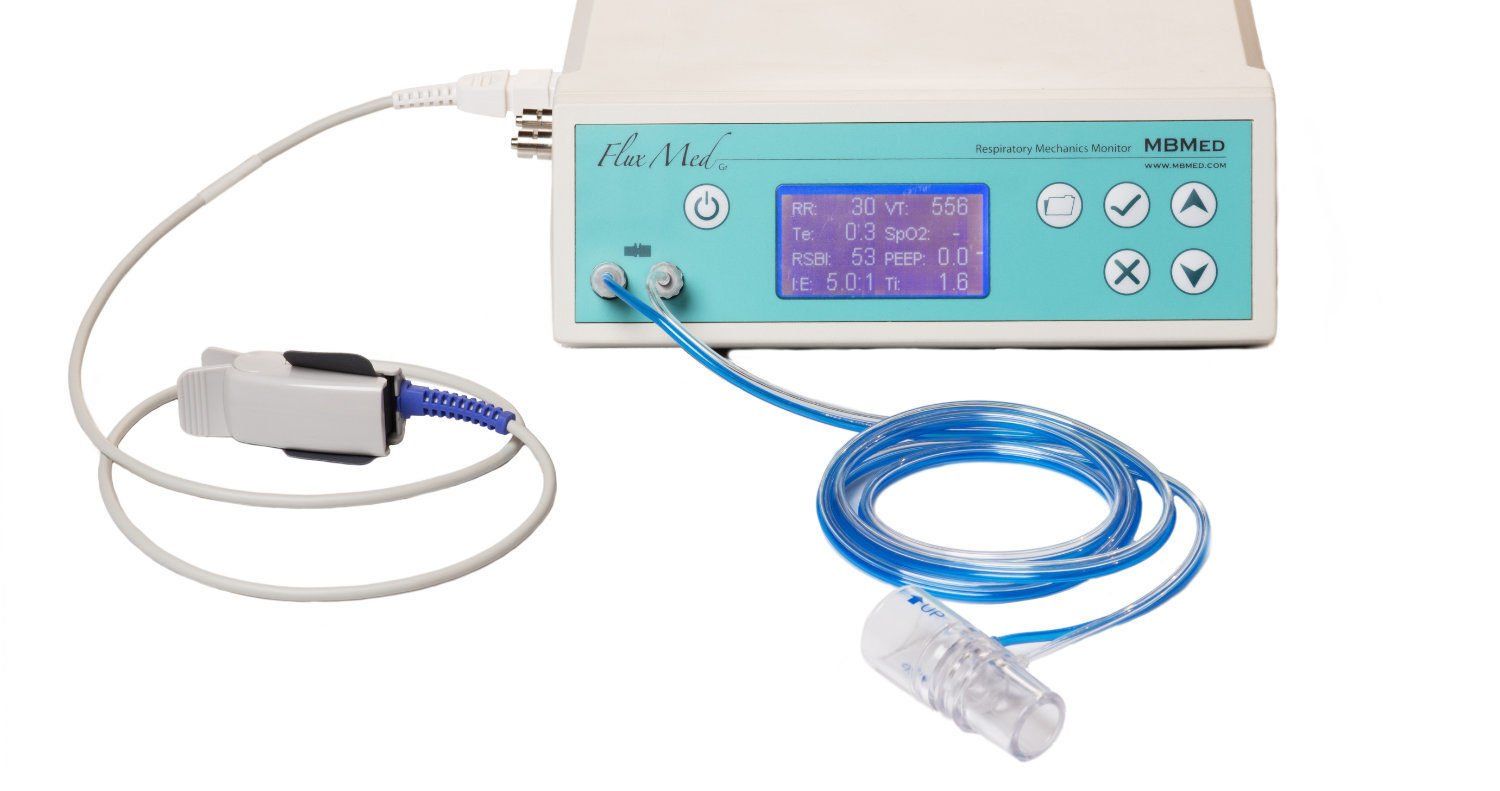Respiratory Monitors
FluxMed GrE

The FluxMed GrE main features:
- Esophageal Pressure
- More than 40 Parameters
- 5 Signals
- 3 Loops
- Stress Index (SI)
- Pressure Time Product (PTP) Plot
- Work of Breathing (WOB) – Campbell Diagram
- Tendency Graph
- Pimax – Pemax – P0,1 Measurement
- Signals Records
The FluxMed GrE monitor is a respiratory monitor capable of measuring the esophageal pressure waveform and associated respiratory parameters that makes possible a complete patient evaluation and assessment.
Every patient in the process of weaning should have the esophageal pressure monitored, especially the COPD patients. It is a fundamental tool for use in intensive care units, pulmonary laboratories, sleep laboratories and doctor surgeries. It allows the evaluation of the effectiveness of mechanical ventilation and avoids situations that can injure lung tissue.
The FluxMed GrE monitor allows automatic and breath to breath reading of respiratory effort by calculating the pressure-time product (PTP), work of breathing (WoB) through the Campbell Diagram, the Stress Index (SI) and the most important trends in respiratory parameters. With these tools, the professional can:
- Avoid alveolar collapse and overdistension.
- Perform easy and safe recruitment maneuvers.
- Improve the synchronization of the ventilator with the patient in assisted ventilation
- Achieve weaning more quickly and safely
- Reduce assisted ventilation time
- Maximize the efficiency of mechanical assistance
Esophageal Pressure
The measurement of esophageal pressure makes it possible to measure the most relevant parameters in the quantification of the effort done by the respiratory muscles in mechanically ventilated patients. A patient’s ineffective respiratory efforts can be detected and autoPEEP measured. It has been shown that using esophageal pressure reduces the patient’s weaning time.
Ventilated Patients
FluxMed GrE respiratory mechanics monitor can be directly connected to an intubated and ventilated patient in assisted or controlled ventilation, enabling a detailed analysis of synchronicity between the patient and the respirator.
Weaning
FluxMed GrE respiratory mechanics monitor shows the most important parameters on screen to help determine the success of a patient’s weaning. It makes it possible to carefully carry out a patient’s follow-up, in the process of not needing further respiratory assistance.
T-tube test
Respirators lose monitoring capacity once they are disconnected from the patient. The FluxMed monitor allows to continue the monitoring of respiratory mechanics during T-Tube tests, allowing the professional to know the evolution of the respiratory mechanics of the patient during the test.
Flow Sensor
The flow sensor is designed to perform a proximal measurement, thus avoiding the error produced by the distensibility of the respiratory tubes.
Non-Invasive Ventilation (VNI)
It is particularly useful for monitoring ventilated patients in a non-invasive way. The flow sensor easily adapts to face masks making it possible to monitor patients with CPAP or BIPAP.
Spontaneous Respiration
Connecting the flow sensor to a mask allows spontaneous-breathing monitoring, thus easily obtaining accurate readings of the patient’s condition making it possible to objectively choose whether there is or not a need to intubate and mechanically assist breathing. It allows for a thorough follow-up of the patient.
PC Connectivity
FluxMed GrE respiratory mechanics monitor comes with an USB data transfer connector, making it possible to record long lasting examinations with measurements and tendencies of the calculated parameters.
